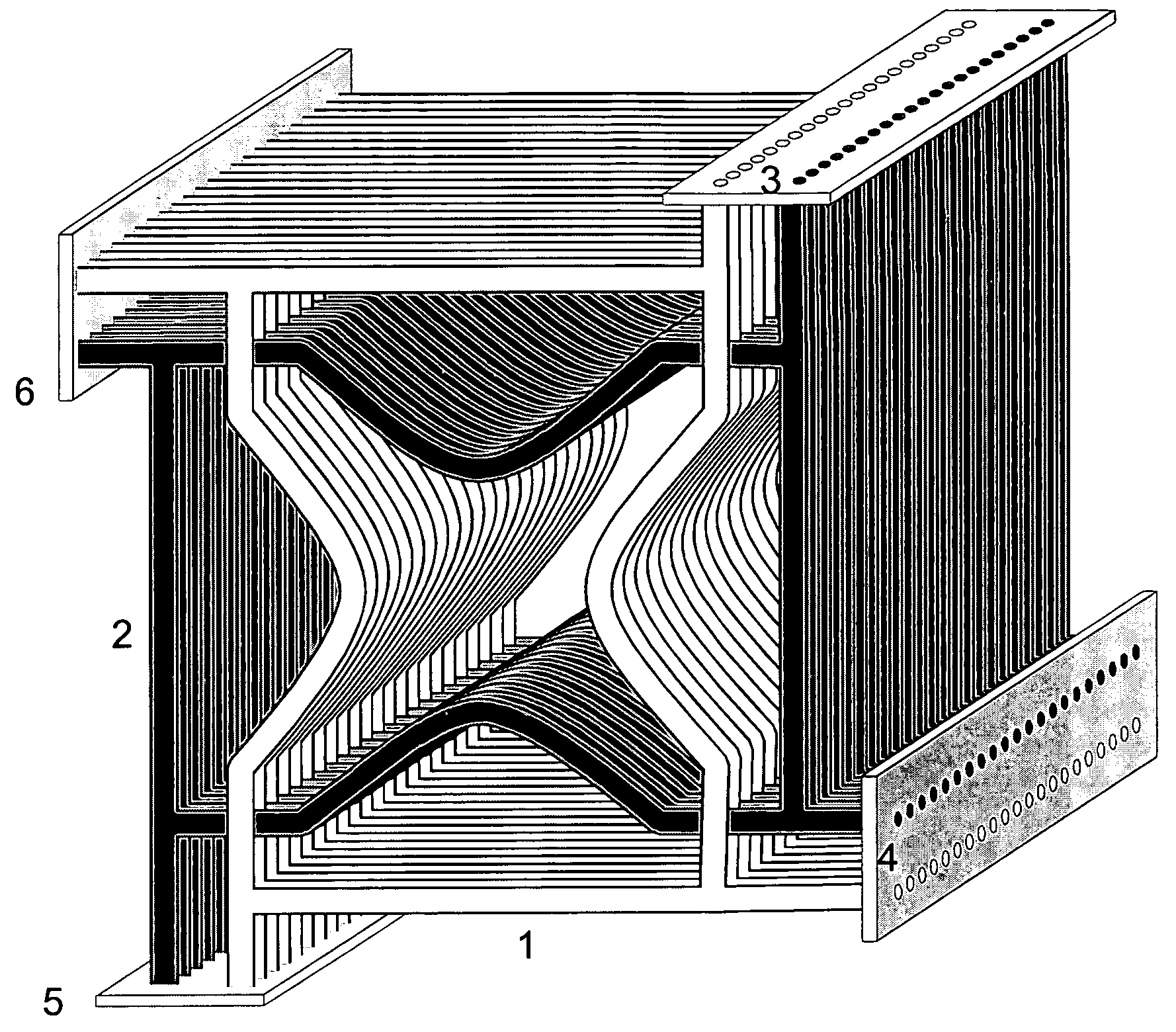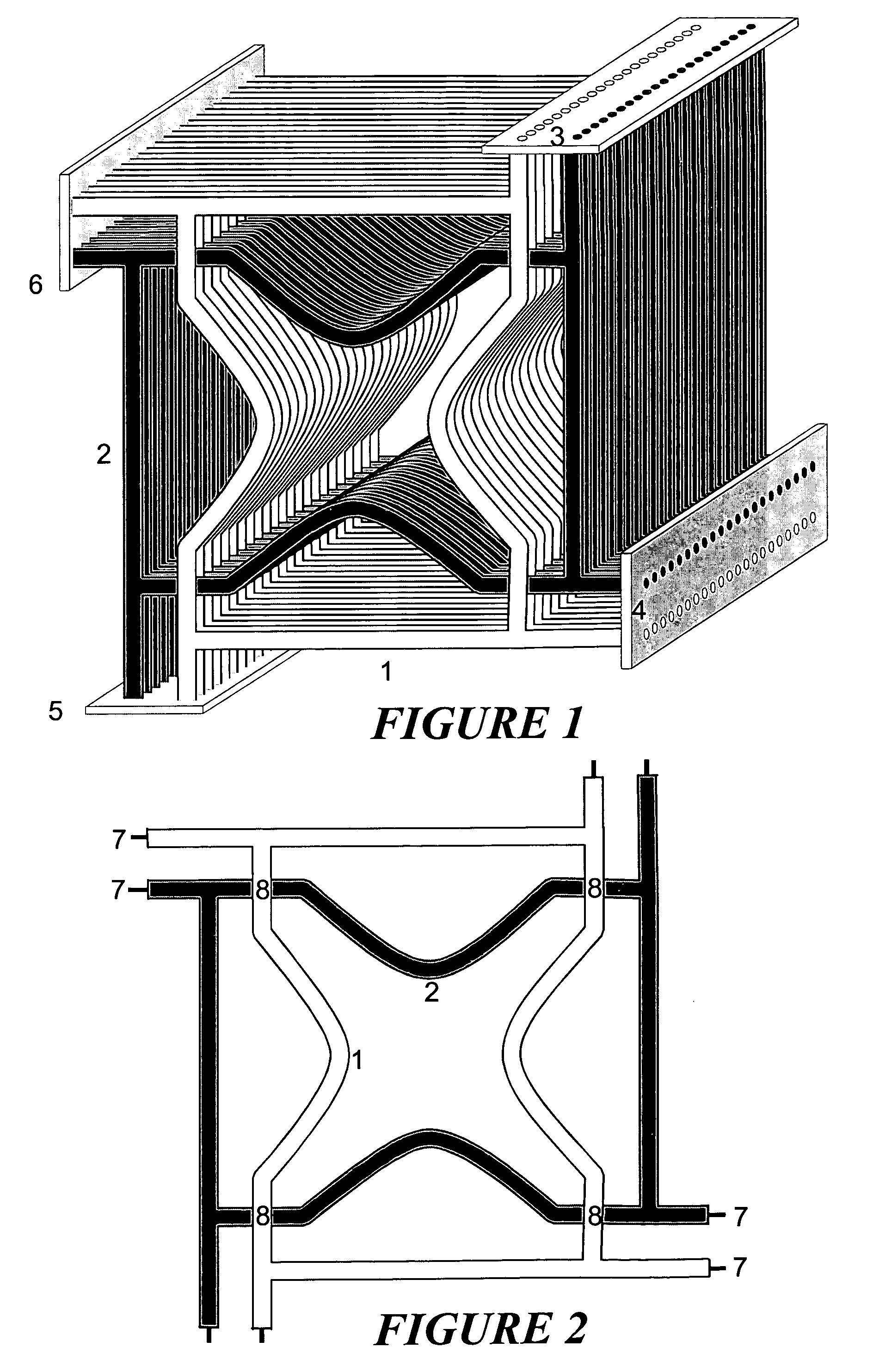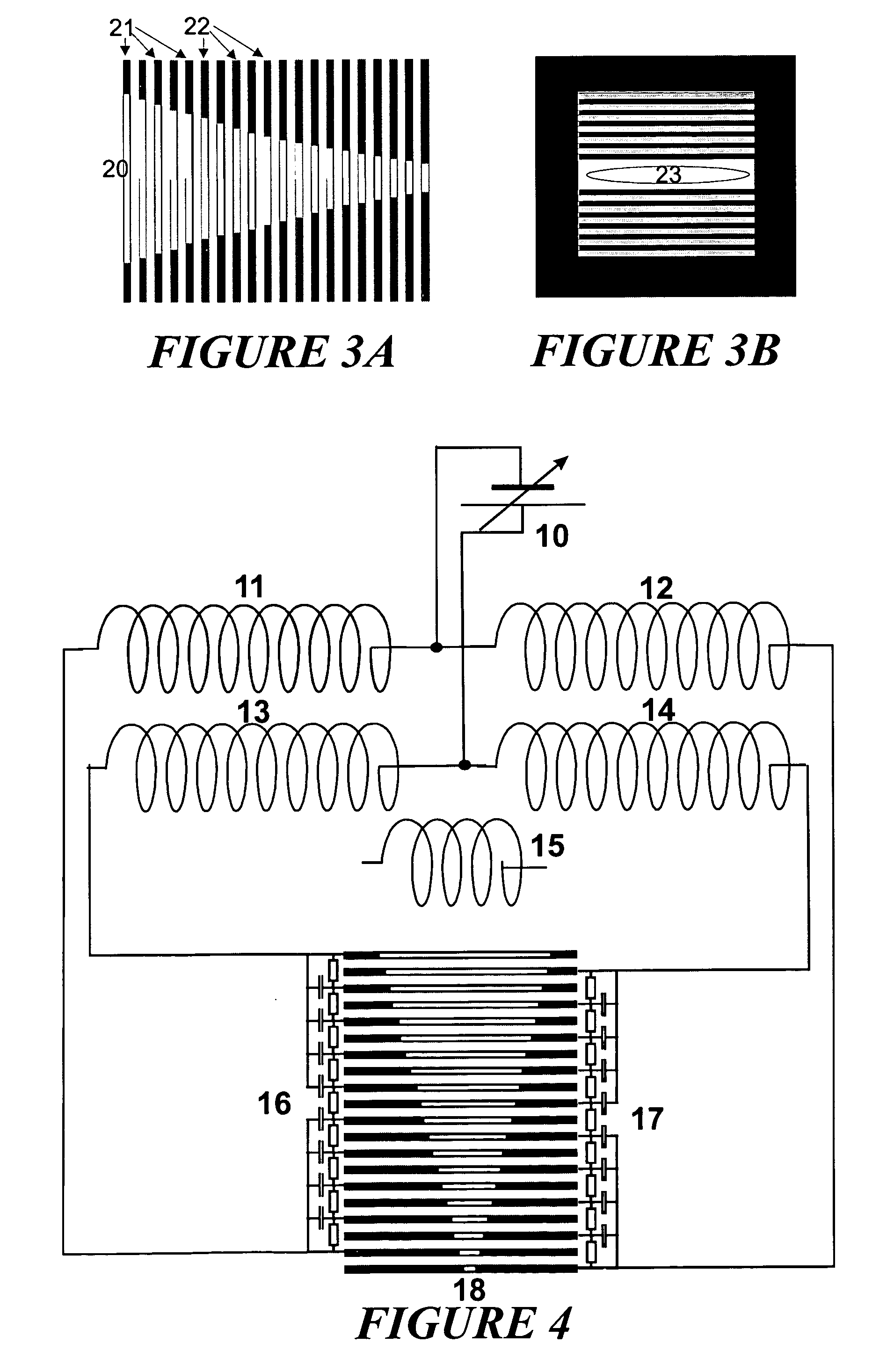Ion guides with RF diaphragm stacks
a diaphragm and diaphragm technology, applied in the direction of instruments, particle separator tube details, separation processes, etc., can solve the problems of not actively driving ions forward without complicated additional measures, ions are not, and the embodiment of the ion funnel that has become familiar is particularly disadvantageous
- Summary
- Abstract
- Description
- Claims
- Application Information
AI Technical Summary
Benefits of technology
Problems solved by technology
Method used
Image
Examples
Embodiment Construction
[0027]The invention provides special ion guides, based on stacks of apertured diaphragms, which not only drive the ion beam actively forward, but which are also able to shape its cross section. In connection with a damping and cooling gas, ions can be collected in particular regions of the interior of the diaphragm stack.
[0028]The characteristic property of the diaphragm stack in accordance with the invention is that, at least in part, it no longer contains the circular, coaxial holes in the diaphragms that until now have been exclusively used, but has diaphragms with oval, rectangular or even more complicated, even indented apertures. A further feature in accordance with the invention is that successive diaphragms, which are now no longer rotationally symmetrical, can each be arranged at a fixed angle with respect to one another. The features in accordance with the invention permit specific influence to be exerted on the ion beam, in particular influence on the cross-sectional shap...
PUM
 Login to View More
Login to View More Abstract
Description
Claims
Application Information
 Login to View More
Login to View More - R&D
- Intellectual Property
- Life Sciences
- Materials
- Tech Scout
- Unparalleled Data Quality
- Higher Quality Content
- 60% Fewer Hallucinations
Browse by: Latest US Patents, China's latest patents, Technical Efficacy Thesaurus, Application Domain, Technology Topic, Popular Technical Reports.
© 2025 PatSnap. All rights reserved.Legal|Privacy policy|Modern Slavery Act Transparency Statement|Sitemap|About US| Contact US: help@patsnap.com



